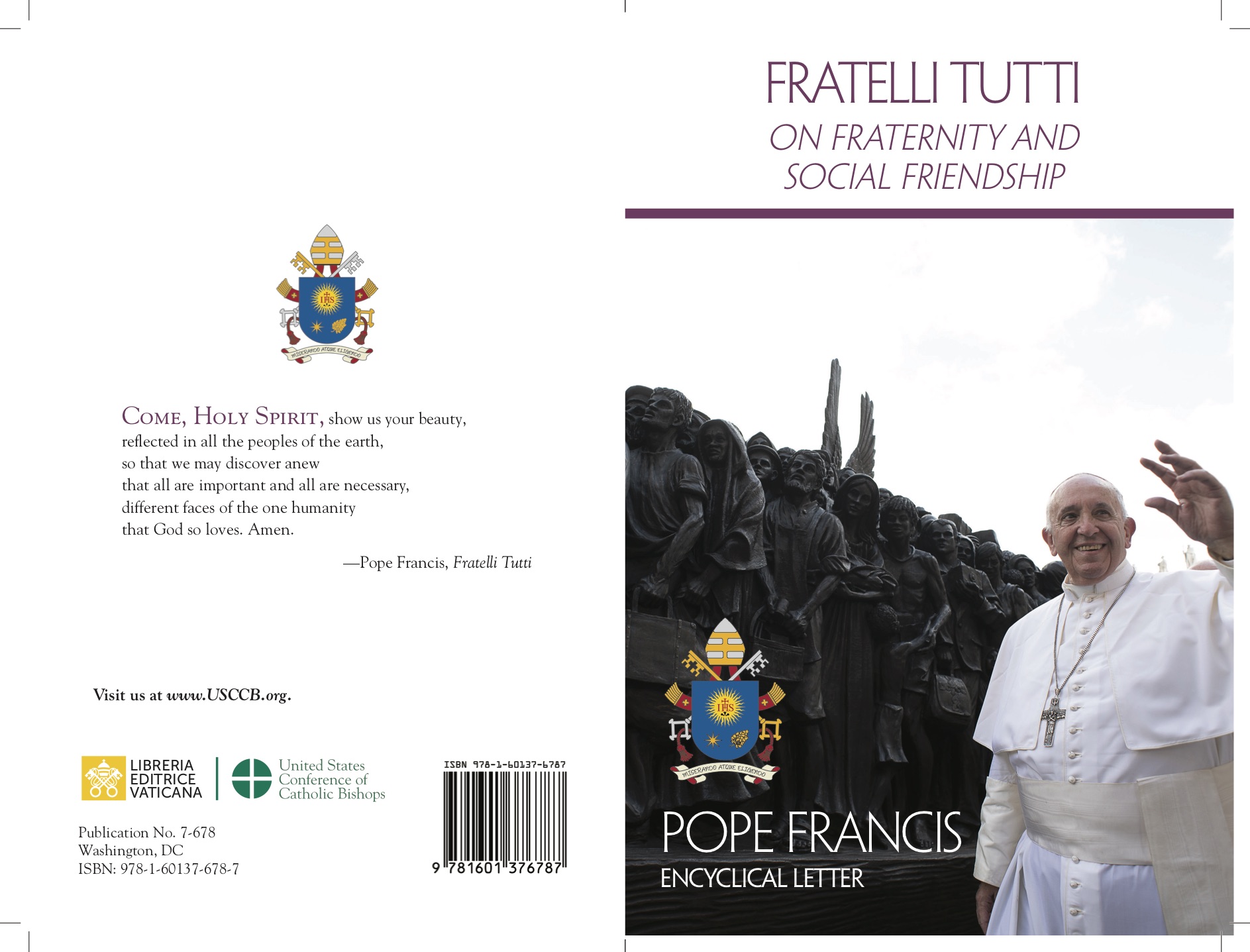
Pope Francis pushed, almost with a sense of urgency, to change the scales in favour of the female presence in the Church. On Saturday, February 15, when he had been hospitalized for twenty-four hours, the Vatican Press Office officially announced a memorable appointment that the pope had revealed on television. It read that starting March 1, 2025, the Franciscan sister Raffaella Petrini would become president of the Governorate of the State of Vatican City, a position she had held as Secretary General since 2021.
This was a significant break from tradition in the governance of the Vatican. For the first time, the executive power within the city-state that is to whom the heart of the Roman Catholic Church is entrusted, on behalf of the pope, has been given to a person who is neither ordained nor, furthermore, not a man. Today, the Vatican has a female governor.
In addition, in accordance with the Fundamental Law of the State of Vatican City, Petrini also became the president of the Pontifical Commission, which is composed of cardinals and holds legislative functions. This body is responsible for approving laws and other normative provisions, and for approving the annual budget, the final accounts, and the three-year financial plan. In this case, her appointment also represents a “first”, for the same Fundamental Law stipulates that a cardinal hold the office of president, and this time, it is not. In the Pontifical Commission, Raffaella Petrini is to work alongside another woman, that being one of the members of the College of State Councillors, reviews legal matters. Sister Alessandra Smerilli, an economist and Daughter of Mary Help of Christians, who was appointed by the pope in 2019, now holds this position.
Without many exceptions, this is an historic moment. With the Curia’s new constitution, the Predicate Evangelium, promulgated on March 19, 2022, Pope Francis had firmly expressed support for greater lay participation, stating, “Each Christian, by virtue of baptism, is a missionary… This must necessarily be taken into account in the reform of the Curia, which should consequently make provision for the involvement of lay women and men, also in roles of government and responsibility”. However, in 2025, he accelerated this with a double move. Before the appointment of Raffaella Petrini, on January 6, the Italian missionary sister Simona Brambilla was appointed Prefect of the Dicastery for Institutes of Consecrated Life and Societies of Apostolic Life. Brambilla is the first woman to head a Roman Curia dicastery, and a significant one at that. Henceforth, she will referred to as “Prefetta”.
Many say it is still not enough. That Power with a capital P remains firmly in the hands of men and has not been shaken. Nevertheless, Pope Francis’ moves marked the times and are the consequence of the slow yet steady advance of women in the Curia and the Vatican. Here is the data to support this: between 2013 and 2023, the percentage of women working for the Holy See increased from nearly 19.2% to 23.4%, with recognized praise. As Cardinal Jean-Paul Vesco, archbishop of Algiers, declared in Women Church World in March 2024, “In the Vatican dicasteries, where there are now more women than in the past and where they hold more senor positions, the atmosphere has radically changed. All it takes is a few women and the Curia is no longer that clerical inner circle that is unfortunately so easily stigmatized”.
In an unprecedented move, Sister Raffaella Petrini had already been appointed, along with two other women, as one of the first three members of the Dicastery for Bishops in 2022, a crucial role for the life of the Church. To put it plainly, three women contribute to the selection of future bishops. Their profiles are indisputable. Along with Petrini, there is Yvonne Reungoat, a Frenchwoman, who is the former Superior General of the Congregation of the Daughters of Mary Help of Christians, and Argentine sociologist and consecrated virgin María Lía Zervino, former president of the World Union of Catholic Women’s Organizations and director of the Justice and Peace Commission of the Argentine Episcopal Conference. These people are competent, with strong personalities, and not at all shy in the face of Power. In 2021, Zervino sent an open letter to Pope Francis in which she wrote that the stakes in female appointments are not about “occupying positions to be seen as ‘decorative flowers,’ or because it is fashionable to appoint women, nor reaching positions to ‘climb’ the power ladder”. Instead, she continued, it is about “serving the Church with the gifts that the Creator Father has given us”.
Rightly, so, these high-level appointments have made headlines worldwide, but they are the culmination of a process that began some time ago, albeit with less fanfare.
Historical records trace the presence of the first laywoman on the payroll of the Pontifical State to 1915, who was an Italian seamstress. In 1929, the first woman with a university degree arrived. A few years later, in 1934, while the Nazis had just come to power in Germany, Pope Pius XII called upon the famous Jewish archaeologist Hermine Speier to manage the photographic archives of the Vatican Museums. Further research has shown that, before these pioneers, there were other female collaborators.
Historically, the appointment of women to positions of responsibility began with Pope Paul VI, following the Second Vatican Council. However, it was under the papacy of Jorge Mario Bergoglio that a significant number of female representatives reached the higher echelons of the Holy See’s power hierarchies. In 2014, less than a year after his election to the papacy, Pope Francis appointed British sociologist Margaret Archer as president of the Pontifical Academy of Social Sciences. At the time, nothing revolutionary was perceived; after all, twenty years earlier, Pope John Paul II had appointed American diplomat Mary Ann Glendon to the same position. However, Pope Francis’ appointment marked the beginning of an uninterrupted journey. Just two years later, in 2016, two papal appointments made headlines worldwide, which brought two women deservedly into the spotlight, namely, Paloma García Ovejero, a young Spanish journalist, became deputy director of the Holy See Press Office, and Barbara Jatta, an Italian art historian, became director of the Vatican Museums. Certainly, the female presence had already been established in the fields of communication and art and culture, even in the traditionally male-dominated world of the Vatican. After all, Jatta succeeded male lay directors. Yet, for everyone, it was clear that an important milestone had been reached; and for the first time, two women had been appointed to leadership roles in two prestigious institutions. Jatta leads a cultural giant, the third largest museum in the world and one of the main sources of income for the Vatican City State. García Ovejero is the first woman to speak on behalf of the Sovereign Pontiff.
There has been a shift from secondary roles to top-tier appointments. Female undersecretaries, who hold the third level of management positions within the Vatican’s leadership teams, were not an innovation. Pope Paul VI had appointed a woman as undersecretary to the Council for the Laity. Pope John Paul II appointed another to the Congregation for Religious Life. Pope Benedict XVI appointed two more, respectively to the Congregation for Religious Life and the Pontifical Council for Justice and Peace.
However, Pope Francis accelerated the pace with Gabriella Gambino and Linda Ghisoni to the Dicastery for Laity, Family, and Life; Sister Carmen Ros Nortes to the Congregation for Religious Life; Sister Silvana Piro to the Administration of the Patrimony of the Apostolic See; and, Antonella Sciarrone Alibrandi to the Dicastery for Culture and Education.
At first, critics and eternal naysayers skeptically argued that this was a mere façade, a series of symbolic appointments limited to fields that have little influence on the life of the universal Church
However, in January 2020 and February 2021, two true shocks occurred within the power structures of the Roman Curia. Two women found themselves in decision-making roles that had previously been predominantly assigned to clergy. Their names are, Francesca Di Giovanni, an Italian jurist, who became the first woman to hold the role of undersecretary in the Secretariat of State, the government of the Church, the Sacred Palace par excellence, which is considered impenetrable in the collective imagination. The second positon went to Sister Nathalie Becquart, a French Xaverian, who joined the leadership team of the General Secretariat of the Synod of Bishops, which is an important body created by Pope Paul VI, and independent of the Roman Curia.
“The first strong internal signal was the appointment of Francesca Di Giovanni, a Focolarina woman, to head the multilateral affairs of the Secretariat of State in 2020”, recalls theologian Martin Pinet, author of Le pouvoir dans l’Église, on en parle?[Are We Talking About Power In The Church?] (Cerf, 2025). “A woman had authority not only over laity and the religious, but also priests and diplomats”.
For her part, by becoming undersecretary of the General Secretariat of the Synod of Bishops, Nathalie Becquart, who is a graduate of the prestigious HEC business school in Paris, automatically gained the right to vote in the Synod’s general assemblies, which is a breach in the wall. The issue of women’s voting rights at the Synod had been at the center of fierce debates during the last assemblies and had received significant media coverage. Pope Francis marked a new and important turning point by giving a push to the process.
From that moment, everything accelerated, with a cascade of appointments and the inclusion of several women in the governance of the Church. In 2020, in a single move, six women out of fifteen members joined the Council for the Economy, which is the body that oversees economic activities. This was a revolution by the standards of the Roman Curia. In 2021, another important milestone occurred when Alessandra Smerilli, an Italian nun and economist, became the number two of the Dicastery for Promoting Integral Human Development, which was the highest position ever held by a woman.
Pope Francis is also the first pope to appoint women as members of curial bodies, a presence whose weight is not always fully appreciated. Another innovation under Pope Francis is the appointment of female secretaries in pontifical commissions, which includes Nuria Calduch-Benages to the Pontifical Biblical Commission, Emilce Cuda to the Pontifical Commission for Latin America, Raffaella Giuliani to the Pontifical Commission for Sacred Archaeology.
This group of women, which may still be numerically small, though nonetheless, competent and significant, now occupies a central position. “Theologically”, explains Martin Pinet, “nothing prevents delegated power from being exercised by a layperson, and therefore by a woman, because in reality, all powers exercised in the Curia are so-called delegated powers, i.e., exercised as participation in the ministry of the Bishop of Rome. Therefore, female curial appointments are just and healthy because they allow us to move away from the opinion, which is still prevalent in some circles and without any theological foundation, which men are intrinsically made to govern and women to serve, and that in women there are factors incompatible with the exercise of power”.
Five days before his death, on April 16, when addressing the rector of the Catholic University of the Sacred Heart, Elena Beccalli, Pope Francis stated -and repeated-, “When women are in charge, things improve”.
by Romilda Ferrauto and Marie-Lucile Kubacki
The person in charge of the religion column of “La Vie”, a weekly French Roman Catholic magazine













 Purchase the Encyclical here Fratelli Tutti
Purchase the Encyclical here Fratelli Tutti
